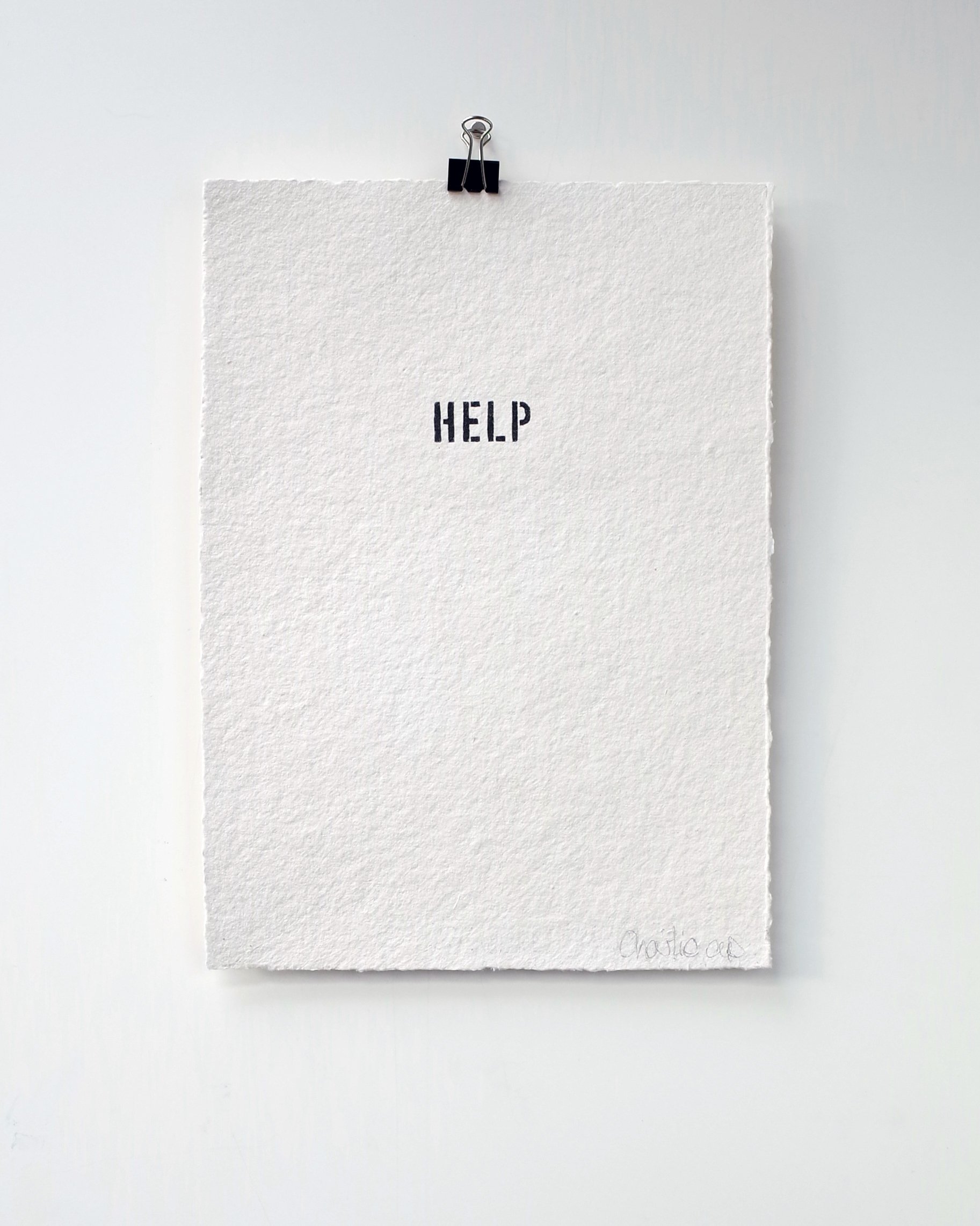Prometheus is a stop-motion animated film (with accompanying sound track by James Torrance) made from prints of West London’s Trellick Tower. Warde returned the two zinc plates from which the prints were etched to the acidbetween each ‘take’, so the film records the gradual deterioration of the process, reflecting the fading of Erno Goldfinger’s utpian blueprint for Modern high-rise living.
Warde made a total of 228 prints; 217 were used to make the film, the edition corresponding with the 217 apartmentsin Trellick Tower. By way of democratising the work and including the residents, Warde delivered a print to each apartment with an accompanying letter outlining the project.
The V&A Museum acquired edition number 7 for their permanent collection; they made it ‘Print of the Month’ in July 2012. It is also features in ‘The V&A Book of Colour in Design’
Prometheus
Memorandum (Robin Hood Gardens)
Charlie Warde’s prints, paintings, installations and videos interrogate utopian texts and ideologies through the post-war British town planning and social housing they have inspired. Typically an iconic modernist structure is represented in an idiom and materials that recall simultaneously the ideals underlying its foundation and the vicissitudes of its subsequent life.
Warde’s postcard-sized copper plate is a souvenir of the structure and a message to the future. The building has been plated in gold - an allusion to the ‘New Jerusalem’ of post-war socialist town-planning and a reference to Thomas More’s Utopia of 1516, in which gold is a non-precious material used to make everyday objects.
Victoria & Albert Museum
The HELPprint/multiple was originally made to raise funds for his Concrete Islandproject. This was a week-long residency during which the artist lived in a portakabin under the Westway Flyover while he built a site-specific installation from rubbish, scrap metal and wood, and builders' rubble. Warde's project was inspired by J. G. Ballard's 1974 novel of the same title, a modern-day version of Daniel Defoe's Robinson Crusoe in which a wealthy architect struggles to survive in an inaccessible urban wasteland where he is stranded when his Jaguar careers off the Westway in an accident. On the sixth night of Warde's residency the nearby Grenfell Tower caught fire with appalling loss of life, the site was closed and the project had to be abandoned.
The image, consisting of just the word HELP hand-stencilled in black acrylic paint onto cream handmade paper, had orginally been a reference to the novel's protagonist spelling the word out in large letters to attract the attention of motorists passing overhead on the Westway, at the same time punningly appealing for financial help from the artist's supporters. But as he has written on social media:
"The prints have subsequently taken on another significance - the screams for HELP from residents trapped in burning apartments, the LACK OF HELP from the council in the aftermath of the disaster compared from the overwhelming amount of HELP from volunteers and the community."
In a chilling echo of the novel, some of the victims of the fire had even desperately spelled out the word HELP on their windows. Half of the proceeds from the sale of the edition were donated to the survivors of the disaster.
Victoria & Albert Museum
HELP
UNSQUARE DANCE (print edition)
This suite of prints was created for 'Playtime', an exhibition by Charlie Warde reimagining the potential of our built environment. Described by the artist as 'an attempt to readdress Jacques Tati’s eponymous 1967 critique of Modernism in which Monsieur Hulot bumbles his way through a cold, immovable and unrelenting Modern Paris'. From November 2021 to February 2022, Warde invited 10 artists, architects, curators and art writers to play with his modular paintings and sculptures. This suite of 16 prints are the same design as a series of magnetically backed paintings of the same title, each depicting a hyper realistic, three-dimensional slab of recently demolished Robin Hood Gardens concrete in varying states of neglect. The idea was to rearrange them in any number of configurations by the players. Warde considered the paintings as sculptures, or “Free Standing Paintings”, made according to Le Corbusier’s Modulor Rule. All of the elements were rebuilt on a weekly basis to explore different possibilities and outcomes, and the results were accessible online live via high definition CCTV cameras, bringing a digital element into the project also.
Victoria & Albert Museum



